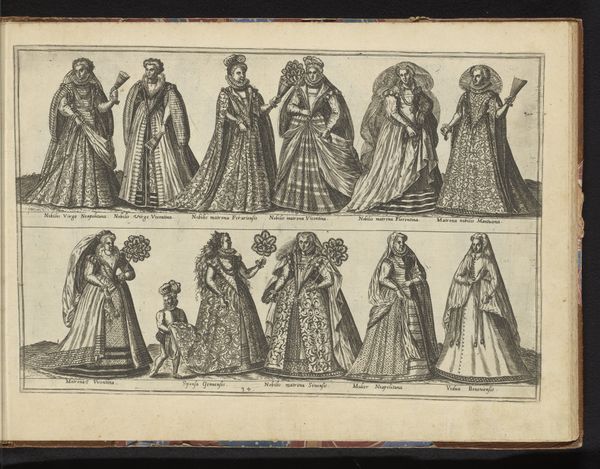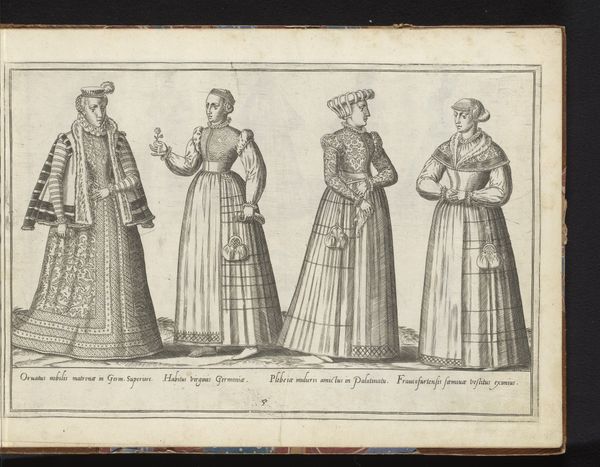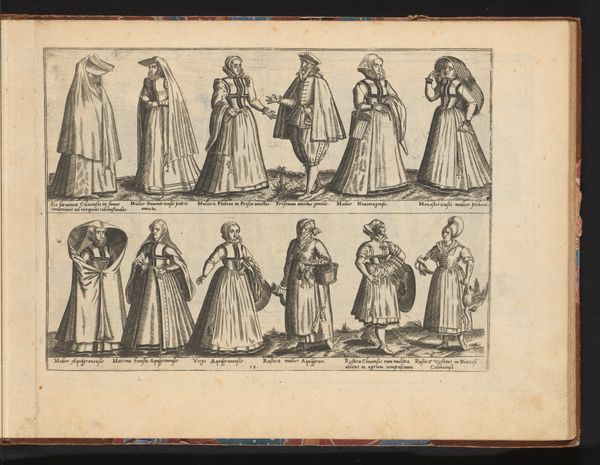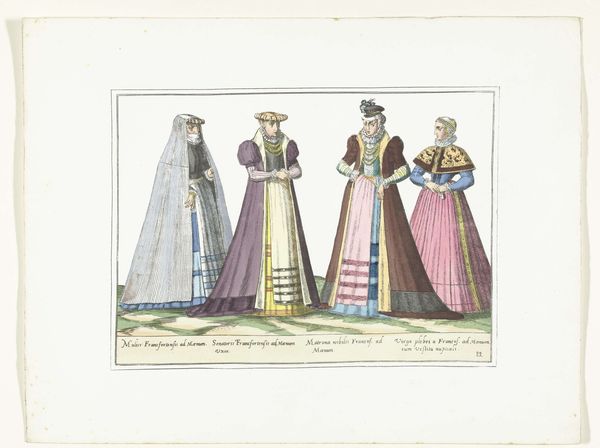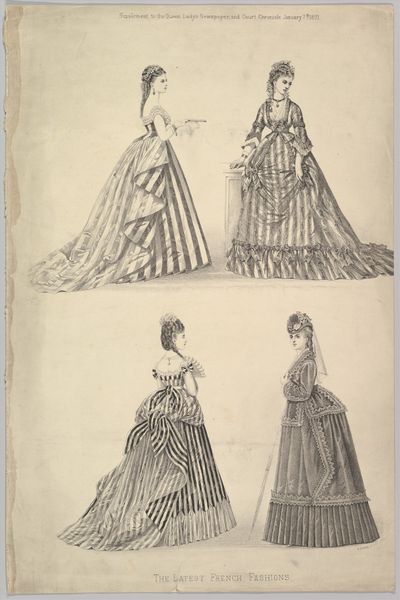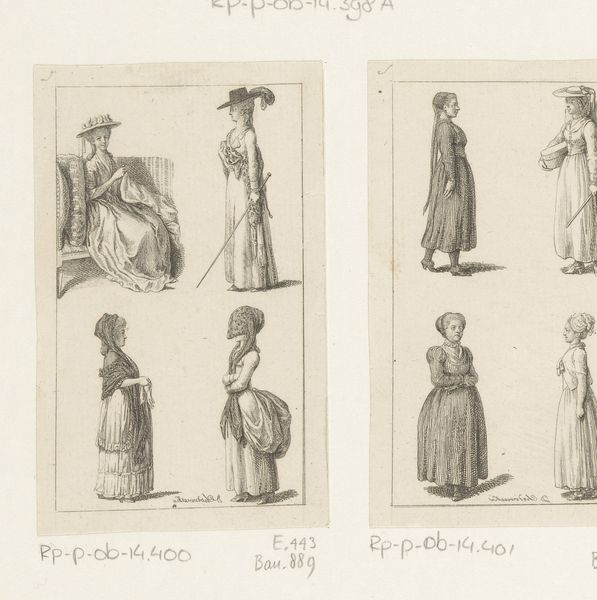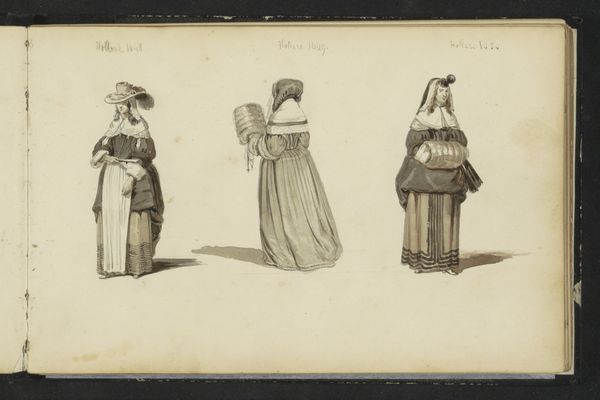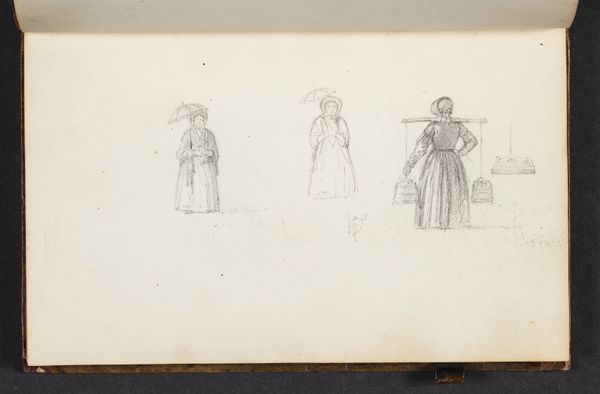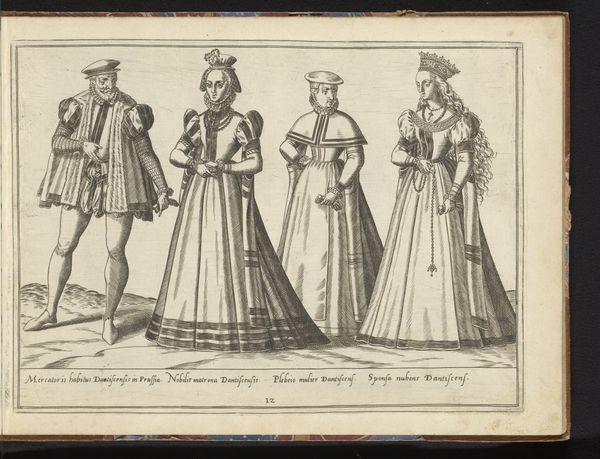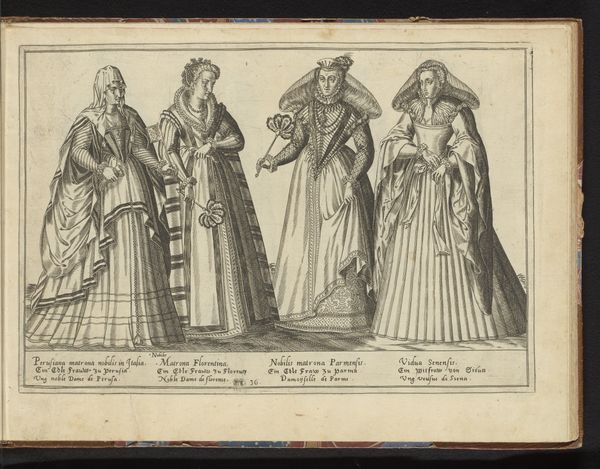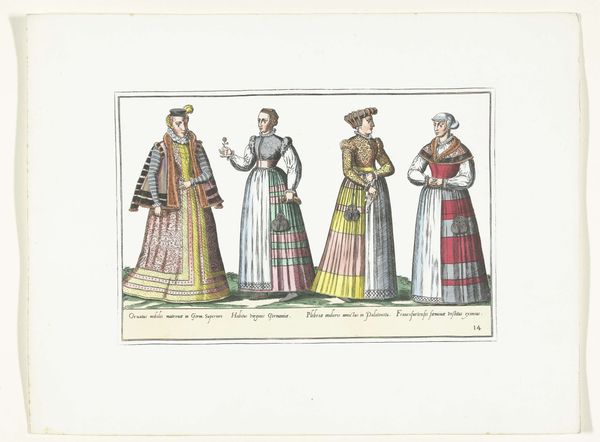
drawing, print, paper, engraving
#
portrait
#
drawing
# print
#
paper
#
11_renaissance
#
historical fashion
#
northern-renaissance
#
engraving
Dimensions: height 265 mm, width 360 mm
Copyright: Rijks Museum: Open Domain
Curator: Looking at this engraving, what strikes you first? Editor: The sheer volume of fabric! The pleats, the folds, the way it all hangs… you can almost feel the weight of it, even in this two-dimensional rendering. Curator: Precisely. This is Abraham de Bruyn's print, titled "Women Dressed According to the Fashion in Germany, circa 1580", dating from 1581. It’s currently housed here at the Rijksmuseum. Editor: Fashion as material culture. Think of the labor involved – spinning the thread, weaving the cloth, the cutting, the sewing, all by hand! Who had access to these resources, this level of production? Curator: That’s the crucial question. It represents not just fashion, but status, access, and the visual markers of social hierarchy within 16th-century Germany. Editor: And location, each figure wears the costume of a specific region, indicating class and profession through fabric, cut and ornamentation. What do you think those accessories were made from? Is that velvet or silk I see there, suggesting privilege? Curator: I think what stands out to me, in contrast, is how remarkably similar the overall silhouette remains despite regional variations. It tells a story about the constraints placed upon women's bodies and presentation, no matter their specific origins. The cone shape. The emphasis on the bust and waist, concealing all other shape below the bust line. Editor: A uniform of womanhood, perhaps, rendered in different fabrics and textures. The repetitive nature of fashion production feels particularly pointed given our modern context of fast fashion. The material reality of this engraving is inextricably tied to the economic structures of its time. What do you make of it? Curator: This engraving prompts us to consider how the materiality of fashion in 1580 served to enforce and negotiate societal power dynamics, class, and regional identities. I see a moment frozen in time, filled with stories of how identity was both constructed and constrained. Editor: Agreed. An impressive intersection of artistry and socio-economic data right here. A compelling testament to the power of studying the materials that shape our world.
Comments
No comments
Be the first to comment and join the conversation on the ultimate creative platform.

